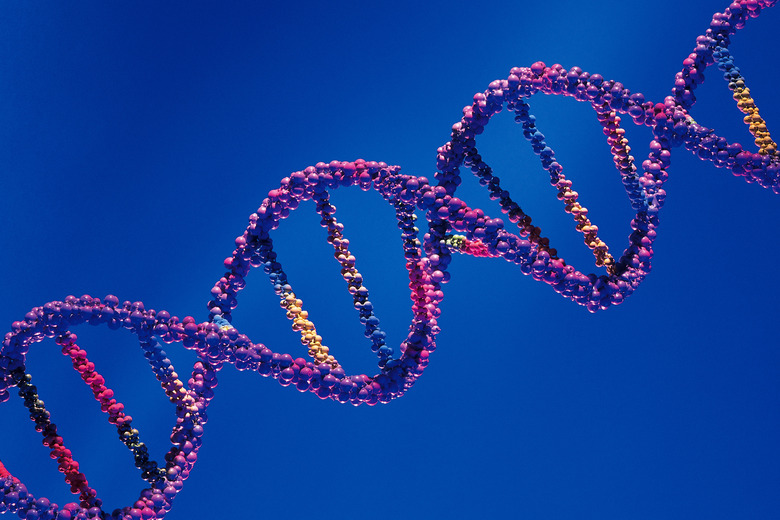Examples Of Selection Against A Dominant Allele
Geneticists strive to learn more about dominant and recessive alleles that lead to certain traits, particularly those that may result in diseases or chronic conditions, such as sickle cell anemia, that may harm a population. These conditions are often caused by the pairing of two recessive alleles that are rare in a given population. However, dominant alleles may also be harmful to a population and thus also selected against.
Genetic Basics
Genetic Basics
With rare exceptions, everyone receives two forms of each gene, each form known as an allele, one from the mother and one from the father. In most cases the allele will be either dominant or recessive, and the pairing is responsible for which trait is exhibited. Alleles are usually represented by one letter, which is capitalized if dominant and lowercase if recessive. If two dominant alleles are paired, or a dominant and a recessive allele are paired, the dominant allele will dictate the trait. Thus, in a plant, if purple flowers are dominant (P) and white ones are recessive (p), if the plant has the genotype PP, Pp or pP, it will have purple flowers. Only plants with pp alleles will show white flowers.
Selecting against Traits
Selecting against Traits
It is actually much easier to select against a dominant allele than it is to select against a recessive one, because if an individual has a dominant allele, the trait is exhibited. In the previous example with the flowers, if someone wanted to get rid of all the purple-flowered plants in her yard, she would breed only the white ones. This would effectively remove all the dominant alleles from the population because none of the white-flowering plants have dominant alleles. However, since plants that have purple flowers could also have one allele for white flowers, a gardener could get rid of all the plants with white flowers and still have plants that produce white flowers.
Gain-of-Function Dominant Allele
Gain-of-Function Dominant Allele
Two types of dominant alleles can cause damage and may be selected against. The first is a gain-of-function allele, which causes the individual to exhibit a trait it would not exhibit normally. In our flower example, this would mean that the flowers are generally white, but this gene causes a strange color (purple) to be produced. In humans, an example of this phenomenon is dwarfism, during which the FGFR3 gene causes the bones to stop growing before they generally do.
Dominant Negative Alleles
Dominant Negative Alleles
The other type of dominant allele that may be harmful is known as a dominant negative allele because it produces proteins that prevent other proteins from doing their jobs. Thus it has a negative effect. If our purple flowers were produced because the dominant gene blocked the white from exhibiting, this dominant gene would be a dominant negative allele. An example of this effect is caused by the p53 protein in humans, which prevents other proteins from regulating cell growth. This allows them to grow faster than they should, leading to cancer. Because this trait is not one that can be outwardly observed, however, it is much more difficult to select against, especially since the effects of this allele often don't show up until later in life. Selecting against a dominant trait is often not so simple as in our theoretical flower example.
Cite This Article
MLA
Weaver, Melinda. "Examples Of Selection Against A Dominant Allele" sciencing.com, https://www.sciencing.com/examples-selection-against-dominant-allele-16382/. 24 April 2017.
APA
Weaver, Melinda. (2017, April 24). Examples Of Selection Against A Dominant Allele. sciencing.com. Retrieved from https://www.sciencing.com/examples-selection-against-dominant-allele-16382/
Chicago
Weaver, Melinda. Examples Of Selection Against A Dominant Allele last modified March 24, 2022. https://www.sciencing.com/examples-selection-against-dominant-allele-16382/
